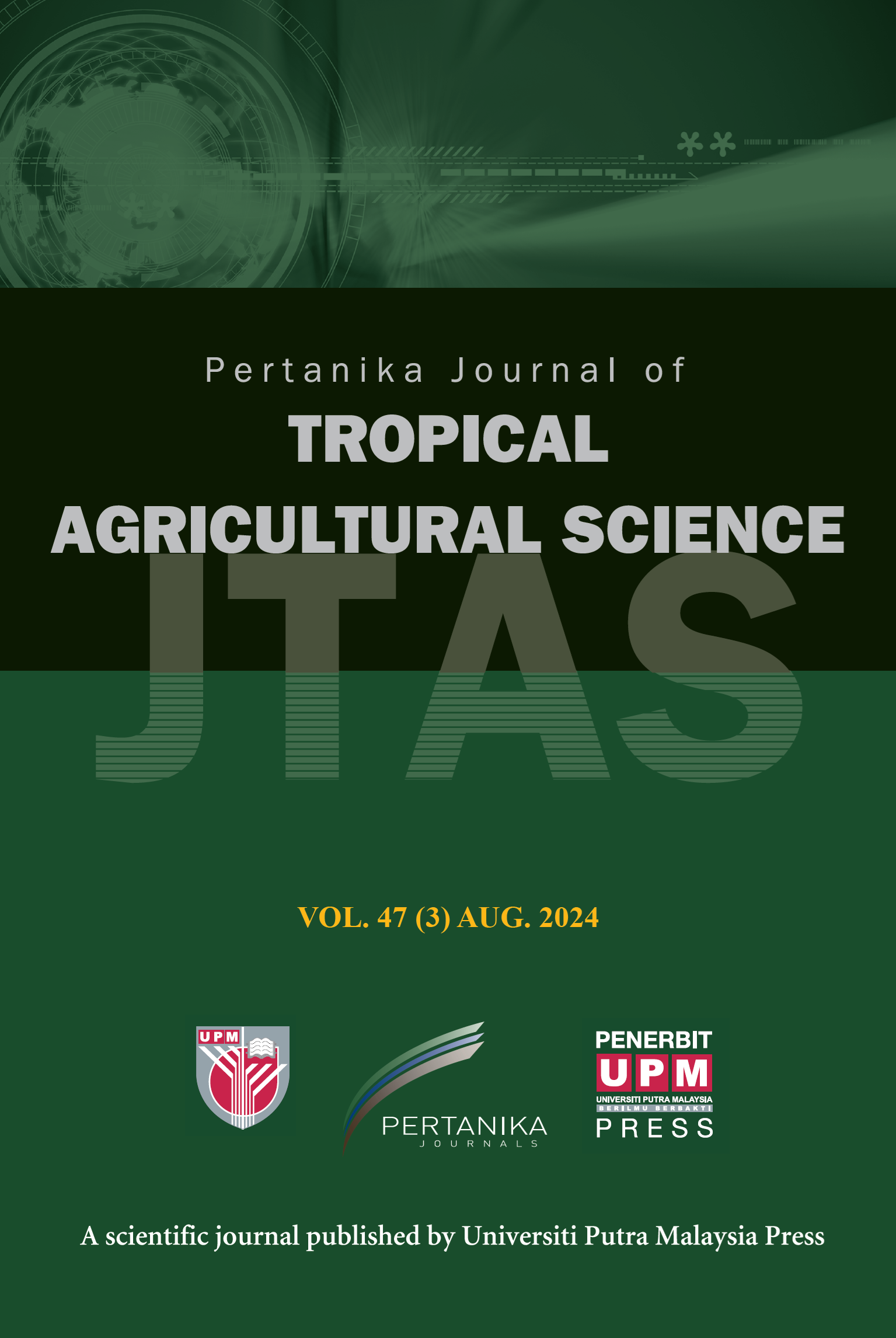PERTANIKA JOURNAL OF TROPICAL AGRICULTURAL SCIENCE
e-ISSN 2231-8542
ISSN 1511-3701
Parent Material, Elemental Composition, and Pedogenic Processes in Ophiolitic Soils in Eastern Taiwan
Marvin Decenilla Cascante, Cho Yin Wu, Chia Yu Yang, Hui Zhen Hum and Zeng Yei Hseu
Pertanika Journal of Tropical Agricultural Science, Volume 48, Issue 3, May 2025
DOI: https://doi.org/10.47836/pjtas.48.3.19
Keywords: Mass balance, mudstone, ophiolitic soils, pedogenesis, trace metals
Published on: 2025-05-16
The ophiolite complex in Chishang, Eastern Taiwan, exhibits a wide variety of soil parent materials, resulting in notable variations in elemental composition and pedological properties. This study characterized soils from four pedons along a toposequence, focusing on mineral composition, micromorphology, general properties, and elemental composition. A mass balance model quantified the mobility of clay, along with major and trace elements. The soils predominantly comprised chlorites, feldspars, quartz, micas, and calcite, with higher silica (Si) concentrations followed by Al. Some of the studied soils had elevated Ca/Mg ratios (≥ 1.0), indicating a primary derivation from sedimentary parent material, such as mudstone. However, concentrations of Cr (71.2 to 105.0 mg kg⁻¹), Ni (43.2 mg kg⁻¹), and Co (20.3 to 27.9 mg kg⁻¹) were notably lower than those reported in other global studies on ophiolite complexes. A significant and positive correlation occurred between Fe- and Al-oxides and Cr, Ni, and Co. The poor correlations between these trace metals and other soil properties (pH, organic carbon, Ca/Mg ratio, rare earth elements) suggest that these factors had limited influence on Cr, Ni, and Co concentrations. The strong (p < 0.01) correlations among trace metals indicate a genetic linkage formed during soil development rather than anthropogenic activities. Additionally, trace metal enrichment in surface soils, as evidenced by the increase of clay and Fe/Al oxides, implies that these components provide crucial adsorption sites for Cr, Ni, and Co.
ISSN 1511-3701
e-ISSN 2231-8542




